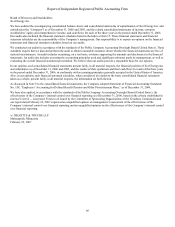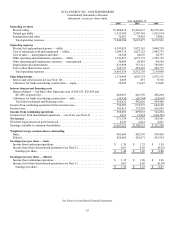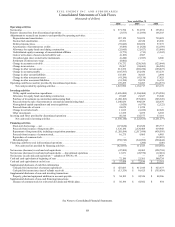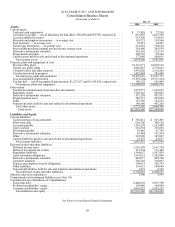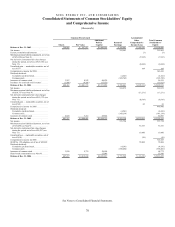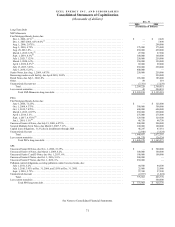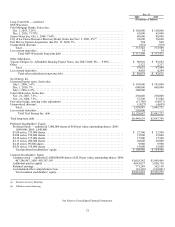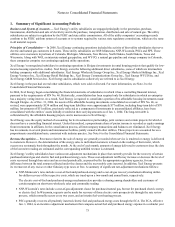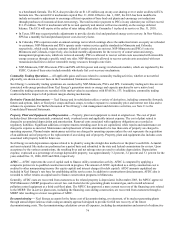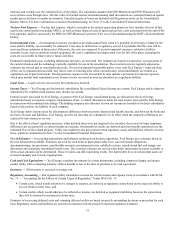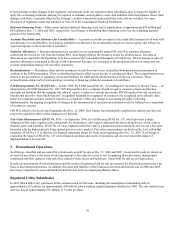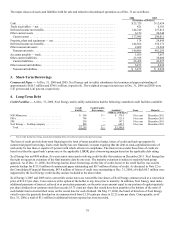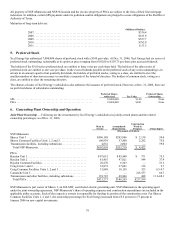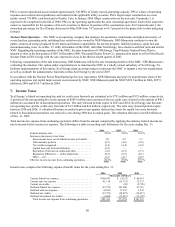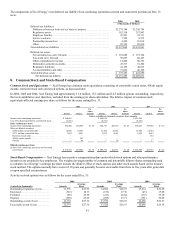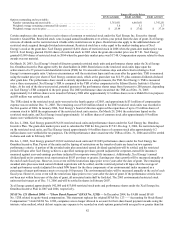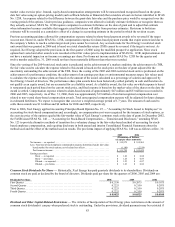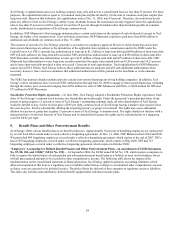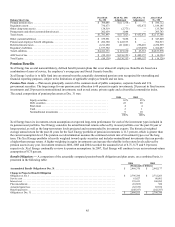Xcel Energy 2006 Annual Report Download - page 85
Download and view the complete annual report
Please find page 85 of the 2006 Xcel Energy annual report below. You can navigate through the pages in the report by either clicking on the pages listed below, or by using the keyword search tool below to find specific information within the annual report.75
material, and extends over the estimated lives of the plants. The calculation assumes that NSP-Minnesota and NSP-Wisconsin will
recover those costs through rates. The fair value of external nuclear decommissioning fund investments are estimated based on quoted
market prices for those or similar investments. Unrealized gains or losses are included with Regulatory assets on the Consolidated
Balance Sheets. For more information on nuclear decommissioning, see Note 15 to the Consolidated Financial Statements.
Nuclear Fuel Expense — Nuclear fuel expense, which is recorded as the nuclear generating plants use fuel, includes the cost of fuel
used in the current period (including AFDC), as well as future disposal costs of spent nuclear fuel, costs associated with the end-of-life
fuel segments, and fees assessed by the DOE for NSP-Minnesota’s portion of the cost of decommissioning the DOE’s fuel-enrichment
facility.
Environmental Costs — Environmental costs are recorded on an undiscounted basis when it is probable Xcel Energy is liable for the
costs and the liability can reasonably be estimated. Costs may be deferred as a regulatory asset if it is probable that the costs will be
recovered from customers in future rates. Otherwise, the costs are expensed. If an environmental expense is related to facilities
currently in use, such as emission-control equipment, the cost is capitalized and depreciated over the life of the plant, assuming the
costs are recoverable in future rates or future cash flow.
Estimated remediation costs, excluding inflationary increases, are recorded. The estimates are based on experience, an assessment of
the current situation and the technology currently available for use in the remediation. The recorded costs are regularly adjusted as
estimates are revised and as remediation proceeds. If several designated responsible parties exist, only Xcel Energy’s expected share
of the cost is estimated and recorded. Any future costs of restoring sites where operation may extend indefinitely are treated as a
capitalized cost of plant retirement. The depreciation expense levels recoverable in rates include a provision for removal expenses,
which may include final remediation costs. Removal costs recovered in rates are classified as a regulatory liability.
Legal Costs — Legal costs are not accrued, but expensed as incurred.
Income Taxes — Xcel Energy and its domestic subsidiaries file consolidated federal income tax returns. Xcel Energy and its domestic
subsidiaries file combined and separate state income tax returns.
Federal income taxes paid by Xcel Energy, as parent of the Xcel Energy consolidated group, are allocated to the Xcel Energy
subsidiaries based on separate company computations of tax. A similar allocation is made for state income taxes paid by Xcel Energy
in connection with combined state filings. The holding company also allocates its own net income tax benefits to its direct subsidiaries
based on the positive tax liability of each company.
Xcel Energy defers income taxes for all temporary differences between pretax financial and taxable income, and between the book and
tax bases of assets and liabilities. Xcel Energy uses the tax rates that are scheduled to be in effect when the temporary differences are
expected to turn around, or reverse.
Due to the effects of past regulatory practices, when deferred taxes were not required to be recorded, the reversal of some temporary
differences are accounted for as current income tax expense. Investment tax credits are deferred and their benefits amortized over the
estimated lives of the related property. Utility rate regulation also has created certain regulatory assets and liabilities related to income
taxes, which are summarized in Note 7 to the Consolidated Financial Statements.
Use of Estimates — In recording transactions and balances resulting from business operations, Xcel Energy uses estimates based on
the best information available. Estimates are used for such items as plant depreciable lives, asset retirement obligations,
decommissioning, tax provisions, uncollectible amounts, environmental costs, unbilled revenues, jurisdictional fuel and energy cost
allocations and actuarially determined benefit costs. The recorded estimates are revised when better information becomes available or
when actual amounts can be determined. Those revisions can affect operating results. The depreciable lives of certain plant assets are
reviewed annually and revised, if appropriate.
Cash and Cash Equivalents — Xcel Energy considers investments in certain instruments, including commercial paper and money
market funds, with a remaining maturity of three months or less at the time of purchase to be cash equivalents.
Inventory — All inventory is recorded at average cost.
Regulatory Accounting — Our regulated utility subsidiaries account for certain income and expense items in accordance with SFAS
No. 71 — “Accounting for the Effects of Certain Types of Regulation.” Under SFAS No. 71:
• Certain costs, which would otherwise be charged to expense, are deferred as regulatory assets based on the expected ability to
recover them in future rates; and
• Certain credits, which would otherwise be reflected as income, are deferred as regulatory liabilities based on the expectation
they will be returned to customers in future rates.
Estimates of recovering deferred costs and returning deferred credits are based on specific ratemaking decisions or precedent for each
item. Regulatory assets and liabilities are amortized consistent with the period of expected regulatory treatment.



